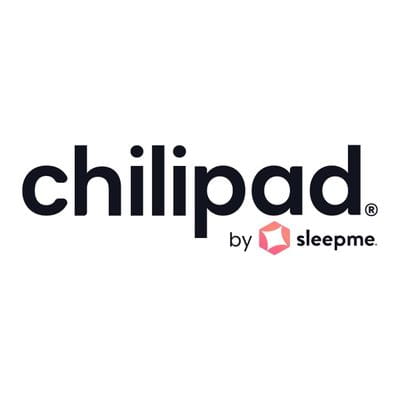
Key Takeaways
REM sleep is where your brain does some of its most important overnight work.
- REM sleep is the most mentally active stage of sleep, marked by vivid dreams and heightened brain activity.
- This stage plays a major role in memory consolidation, emotional regulation, and mood balance.
- Missing REM sleep can lead to poor focus, irritability, and long-term cognitive issues.
- Most adults spend about 20–25% of total sleep in REM, roughly 90 minutes during a 7–8 hour night.
- Sleep trackers can help reveal whether you’re getting enough REM and identify habits that affect brain recovery.
- Consistent sleep timing, limited caffeine, and a cool sleep environment support healthier REM cycles.
Sleep is a fundamental aspect of our lives, influencing our physical health, emotional well-being, and cognitive function. Among the various stages of sleep, Rapid Eye Movement (REM) sleep stands out as a critical phase that plays a vital role in our overall health.
During REM sleep, our brains become highly active, leading to vivid dreams and essential processes that support memory consolidation and emotional regulation.
Ever wake up feeling foggy, forgetful, or just off — even after what seemed like a full night’s sleep? The missing piece might be REM sleep. Understanding how much we need, and what happens during this stage can empower individuals to prioritize their sleep health.
Below, we will explore the intricacies of REM sleep, its significance, and practical tips for ensuring you get enough of this essential sleep stage.
What is REM Sleep & Why it Matters?
Rapid Eye Movement (REM) is a vital stage of the sleep cycle characterized by increased brain activity, rapid eye movements, and vivid dreaming.
Typically occurring four to six times a night, REM sleep cycles last between 80 to 100 minutes, with the duration of each episode increasing as the night progresses.
The first REM episode may last only about 10 minutes, while later episodes can extend up to 30 minutes or more. [1]
In contrast, non-REM sleep is characterized by slower brain waves and is crucial for physical recovery, bodily repairs, and immune function. Both REM and non-REM sleep are essential for overall health.
During sleep, the body experiences temporary muscle paralysis, which prevents individuals from acting out their dreams.
This sleep stage is important for various cognitive and emotional processes, making it a critical component of a healthy sleep cycle.
Unlock Deeper REM Sleep with the Chilipad
Struggling to reach that restorative REM stage? The Chilipad helps regulate your sleep temperature, so you can stay comfortably cool and spend more time in the most vital phase of sleep.
What Happens During REM Sleep?
During REM sleep, several important physiological and neurological processes occur.
The brain becomes highly active, resembling its state when awake, which is why this stage is often associated with vivid dreaming.
Heart rate and blood pressure increase, and breathing becomes irregular.
The body also experiences temporary muscle atonia, a state of paralysis that prevents individuals from physically acting out their dreams.
This protective mechanism is crucial for safety, as it allows the brain to engage in complex dream scenarios without the risk of injury.
Additionally, REM sleep is believed to play a role in memory consolidation, emotional processing, and brain development, making it a vital component of overall health. [2]
Why REM Sleep is Important
Wondering why REM sleep is such a big deal? It’s more than dream fuel—it’s a key player in your overall health.
Read our blog for the full breakdown on why REM sleep is important.
What Happens If You Don't Get Enough REM Sleep?
Not getting enough time in this crucial stage of sleep can lead to a range of negative. Individuals may experience cognitive impairments, including difficulty concentrating, memory problems, and reduced problem-solving abilities.
Did You Know: Research indicates that the deprivation of REM sleep can interfere with memory formation. read more on the full impact of sleep deprivation. [3]
Additionally, without a good night's sleep, emotional regulation can be affected, resulting in mood swings, increased anxiety, and heightened stress levels.
Chronic lack may also contribute to long-term health issues, including a higher risk of developing mood disorders and cognitive decline.
Sleep disorders, such as REM sleep behavior disorder and narcolepsy, can lead to insufficient REM sleep and significantly impact overall health. [4]
It is important to consult a healthcare professional if you suspect you might suffer from a sleep disorder.
Recommended Duration of REM Sleep
When you fall asleep, you first enter the Rapid Eye Movement phase, usually within 90 minutes. This stage lasts for only about 10 minutes. As the night progresses, you'll go through 3-5 REM cycles, with each episode getting longer than the previous one.
The final REM phase may last for roughly an hour.
For adults, spending around 20-25% of your time asleep in the REM stage is generally recommended, as it plays a crucial role in brain function and emotional regulation. [5] If you manage to get 7-8 hours of sleep, you should aim for around 90 minutes.
This helps answer the common question: how much REM sleep do you actually need?
It's worth noting that the amount of REM sleep needed varies depending on age. Infants may experience itt for more than 50% of their total sleep time, while the average amount in adults decreases with age, extending through adulthood.
Here’s a breakdown of needs by age: [6]
- Newborns: Approximately 50% of sleep time in REM.
- Children and Teenagers: Require more due to developmental needs.
- Adults: Aim for about 20-25% of total sleep time in REM.
- Older Adults: This percentage may decrease to around 17%.
How Do I Know If I'm Getting Enough?
Determining whether you are getting enough can be challenging without proper tracking. Signs of insufficient REM sleep may include difficulty concentrating, mood swings, and memory issues.
To gain insights into your sleep patterns, consider using a sleep tracker.
A sleep tracker can help monitor your sleep stages, including REM sleep, providing valuable data to assess your sleep quality.
You can identify patterns and make necessary adjustments to improve your sleep health by tracking your sleep.
Positive outcomes include:
- Problem-Solving
- Positive Mood
- Memory
- Creativity
- Learn New Tasks
- Take on New Challenges
- Effective Stress Management
Tips for Achieving More REM Sleep
To increase REM sleep, consider implementing the following strategies:
Stick to a Sleep Schedule to Regulate Sleep Cycles
Maintaining a consistent sleep schedule can help transition through light sleep stages effectively, as it allows your body to reduce brain activity, slow heart rate, and decrease body temperature in preparation for deeper sleep.
Related: Want to learn what deep sleep really does and how to get more of it naturally?
We've got the tips to help you tap into the most restorative part of your sleep cycle.
Limit Alcohol and Caffeine
Both substances can suppress REM sleep. Caffeine, in particular, blocks sleep-promoting brain chemicals, making it essential to limit intake, especially in the hours leading up to bedtime.
Make Sure to Stay Active
Regular physical activity promotes restorative sleep, although it may slightly reduce dream sleep. Aim for at least 30 minutes of moderate exercise most days of the week.
Relax Before Bed
Engage in calming activities such as reading, listening to music, or taking a warm bath. Avoid screens to reduce blue light exposure, which can interfere with the body's natural sleep-wake cycle.
Create a Comfortable Sleep Environment
Ensure your bedroom is conducive to sleep by keeping it dark, quiet, and cool. Consider using blackout curtains, earplugs, or a white noise machine if necessary.
Did You Know: Poor REM sleep can result from sleep disorders like insomnia or obstructive sleep apnea, which disrupts your sleep by causing frequent awakenings during the night. [7]
Final Thought
As you can see, it’s a crucial component of a healthy sleep cycle, playing a vital role in emotional regulation, memory consolidation, and cognitive function. Prioritizing good sleep hygiene can lead to improved overall health and well-being. If you struggle to achieve a sufficient amount of this important sleep, consulting a healthcare professional may be beneficial.
Achieving deeper sleep stages, particularly during non-REM sleep, is essential for tissue repair, muscle growth, and immune system strengthening.
REM Sleep FAQs You Actually Care About
When does REM sleep start after you fall asleep?
REM sleep usually begins about 90 minutes after you fall asleep. Early REM periods are short, then get longer toward morning.
How much REM sleep is normal for adults?
Most adults spend about 20-25% of the night in REM sleep. That works out to roughly 90 to 120 minutes total.
Does REM sleep help memory or mood?
Yes. REM sleep supports memory processing, emotional balance, and mental clarity. Low REM is often linked to brain fog and mood swings.
Peer-Reviewed Research References
-
Dental Sleep Practice.
REM Sleep — How Does It Affect Behavior?
Dental Sleep Practice, February 27, 2025.
Study Type: Clinical Education Review
Key Finding: REM sleep plays a critical role in emotional regulation, memory consolidation, and behavioral processing, with disruptions linked to mood instability and impaired cognitive performance.
View Study
Source URL: https://dentalsleeppractice.com/review-of-rem-sleep-part-one-physiology/
-
Levine, H.
REM Sleep: What Is It, Why Is It Important, and How Can You Get More of It?
Harvard Health Publishing, September 9, 2024.
Study Type: Medical Education Resource
Key Finding: REM sleep supports learning, emotional resilience, and brain health, while insufficient REM sleep is associated with impaired memory, reduced focus, and increased stress vulnerability.
View Resource
Source URL: https://www.health.harvard.edu/staying-healthy/rem-sleep-what-is-it-why-is-it-important-and-how-can-you-get-more-of-it
-
Chen, P., et al.
The Devastating Effects of Sleep Deprivation on Memory: Lessons from Rodent Models.
Clocks & Sleep, 2023.
Study Type: Experimental Animal Study
Key Finding: Sleep deprivation severely impaired memory formation and synaptic plasticity in animal models, highlighting the essential role of sleep—particularly REM sleep—in learning and memory processes.
View Study
Source URL: https://pmc.ncbi.nlm.nih.gov/articles/PMC10204456/
-
Karna, B., & Gupta, V.
Sleep Disorder.
StatPearls Publishing, 2023.
Study Type: Clinical Reference Overview
Key Finding: Sleep disorders disrupt normal sleep architecture, including REM sleep, and are associated with cognitive impairment, emotional dysregulation, and increased risk of chronic disease.
View Study
Source URL: https://www.ncbi.nlm.nih.gov/books/NBK560720/
-
Goldstein, A. N., & Walker, M. P.
The Role of Sleep in Emotional Brain Function.
Annual Review of Clinical Psychology, 2014.
Study Type: Review Article
Key Finding: REM sleep plays a central role in emotional processing and emotional memory consolidation, helping reduce emotional reactivity and support mental health resilience.
View Study
Source URL: https://pmc.ncbi.nlm.nih.gov/articles/PMC4286245/
-
Goldstein, A. N., & Walker, M. P.
The Role of Sleep in Emotional Brain Function.
Annual Review of Clinical Psychology, 2014.
Study Type: Review Article
Key Finding: The research further emphasizes REM sleep’s role in decoupling emotion from memory content, helping regulate mood and reduce emotional stress responses.
View Study
Source URL: https://pmc.ncbi.nlm.nih.gov/articles/PMC4286245/
-
Ting, L., & Malhotra, A.
Disorders of Sleep: An Overview.
Primary Care, 2005.
Study Type: Clinical Review
Key Finding: Disruptions to REM sleep are a common feature across many sleep disorders and are linked to impaired cognition, mood changes, and decreased overall sleep quality.
View Study
Source URL: https://pmc.ncbi.nlm.nih.gov/articles/PMC4368182/









